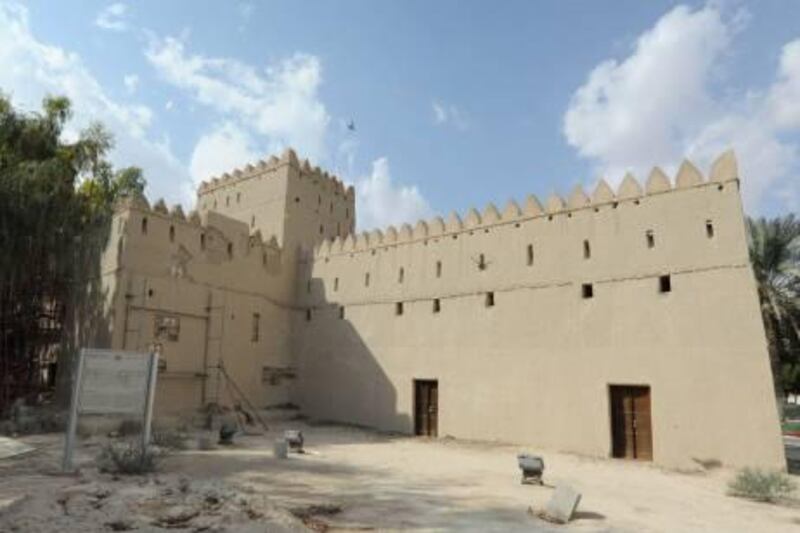ABU DHABI // Built sometime around 1820, Al Murayjib Fort is one of the oldest in Al Ain, having once been the formal residence of members of the ruling Al Nahyan family and a defensive post for protecting the area's local water source.
The walls of the mud and brick structure, held up by date palm beams and loam - soil composed of sand, silt and clay - have no windows, instead being dotted with 10cm-wide slits that allowed occupants to keep a close watch for trespassers.
But time has changed the main structure and its accompanying two towers, which underwent renovations in the 1980s and again in 2006. The fort has proven difficult to preserve, because of the weather's impact on the materials used.
Working closely with the Abu Dhabi Authority for Culture and Heritage, a group of architectural engineering students at UAE University are attempting to preserve the fort by documenting its details digitally. Once that is done, they will be able to explore the structure through layered, interactive renderings and maps.
Taking measurements and collecting detailed information about the design, composition and deterioration of the building - including the many cracks in the structure - the team has worked to create a three-dimensional computer snapshot of the fort.
The hope is that the data will be valuable in the future as it continues to shift.
It is, according to Dr Verdy Kwee, a professor of digital media and architectural information packaging at UAEU, part of a push to get students involved in projects related to architectural heritage, .
"By digitally reconstructing the fort, they were able to understand the architectural elements and detailing of the fort at a much greater level," he said.
"They really gained a better appreciation of the architectural value of the fort."
Adach hopes such digital preservation will help it document changes of other local architectural heritage projects, he said. "They are doing their best to freeze time - an uphill task."
By comparing the renderings with other documents, the students deduced that one of the towers was constructed much later than the other. Its curves and proportions look noticeably different in older photographs.
Ameera al Nuaimi, a recent gradaute from the course who is from Al Ain, said she studied the building "like it was a machine".
"Each part of it works to do something for the building and for the people inside of it," she said.
"We studied each part - the roof, the openings, around the walls, how the mud was useful in construction - and we looked at how people can live in such buildings and how this construction helped to control temperatures."
Her classmate Hamdah Awadhi, from Fujeirah, said she had been most interested by time's effects on the structure.
"We were all fascinated with the fort before and now, to see the problems and how it has changed significantly from past to present and the changes made during renovations," she said.
"By looking at old pictures and comparing it to a digital model we created, we could see doors were shifted or the walls were different thicknesses. It was like putting together a puzzle."
econroy@thenational.ae






